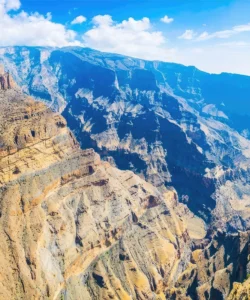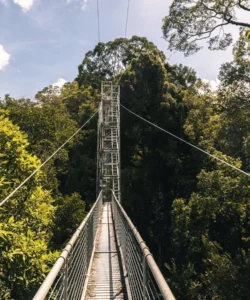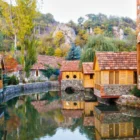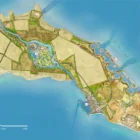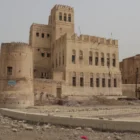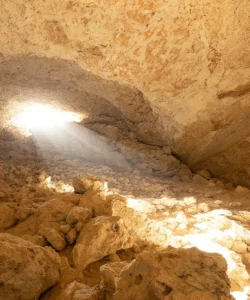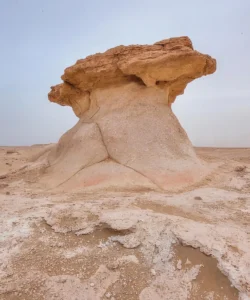Mount Aragats (Armenian: Արագած, Aragats) is an isolated, four-peaked stratovolcano massif in Armenia. It is the highest point in both Armenia and the Lesser Caucasus range, standing as a prominent and iconic feature of the Armenian landscape.
Listen to an introduction about Mount Aragats
Name and Address
- Name: Mount Aragats. The name is often associated with a legendary Armenian king, Ara the Beautiful, and is sometimes translated as “Ara’s Throne” (Ara gah).
- Address: Aragatsotn Province, Armenia.
- Location: Situated in the western part of Armenia, approximately 35-46 kilometers (22-29 miles) northwest of Yerevan. It lies between the Ararat and Shirak plains, and the Akhurian and Kasagh rivers.
How to Get There
Mount Aragats is a popular destination for hikers and nature enthusiasts, with various levels of accessibility depending on the desired peak:
- From Yerevan:
- By Car/Taxi: The most direct way to reach the base (like Lake Kari) is by car or taxi, taking roughly 1.5 to 2 hours from Yerevan.
- By Minibus (Marshrutka): Buses run from Yerevan’s Kilikia Bus Station towards towns like Aparan, from where you might need to arrange a taxi or further transport to the mountain’s slopes. This option takes longer (around 2.5 hours).
- Organized Tours: Many tour operators offer guided hiking trips, especially to Lake Kari and the Southern Peak, which often include transport from Yerevan.
- Accessing the Peaks:
- Lake Kari: Located at an altitude of about 3,200 meters (10,500 feet), Lake Kari is a common starting point for hikes and is accessible by road from Byurakan village. There’s often a small hotel and restaurant by the lake.
- Hiking: The mountain has four distinct peaks:
- Northern Peak (4,090 m / 13,419 ft): The highest point in Armenia, offering a challenging ascent.
- Western Peak (3,995 m / 13,107 ft): The second highest, also a difficult climb.
- Eastern Peak (3,908 m / 12,822 ft):
- Southern Peak (3,888 m / 12,756 ft): The lowest and most accessible peak, suitable for less experienced hikers, usually taking about 2 hours from Lake Kari.
- Best Hiking Period: The ideal time for hiking is from July to mid-September when snow cover has largely melted and trails are dry and safer.
Landscape and Geology
Mount Aragats is a massive, extinct stratovolcano, and its geological history has shaped its unique landscape.
- Volcanic Origin: Formed by ancient volcanic eruptions, Aragats is composed of lavas and tufas, giving its slopes a rocky, mineral-rich character. The summit caldera (crater) is notable, and smaller glacial lakes, like Lake Kari, are found on its slopes, formed from melting snow and ice.
- Four Peaks: The distinctive four peaks are remnants of its volcanic cone. The rugged terrain includes deep ravines, lava fields, and varied rock formations.
- Flora and Fauna: The mountain’s slopes exhibit diverse landscapes depending on altitude. Lower slopes were historically forested (a small forest of Eastern oak still exists at 1800-2300m), transitioning to expansive alpine meadows at higher elevations. These meadows are rich in endemic plants and wildflowers. The area is home to various animals, including foxes, wolves, and a variety of birds.
- Hydrology: Numerous cool springs originate from Aragats’ slopes, feeding rivers like Kasagh, Gegharot, and Amberd, and contributing to the water supply of the Ararat Plain.
- Historical and Archaeological Features: The slopes of Aragats also contain traces of ancient human culture, including rock carvings (petroglyphs), ancient irrigation systems, and “vishapakar” (dragon stones) near water sources, symbolizing water worship from pagan times. Medieval architectural monuments like the Amberd Fortress, Byurakan Observatory, and Tegher Monastery are also found on its slopes.
What Makes It Famous
Mount Aragats holds a prominent place in Armenia for several reasons:
- Highest Peak: It is the highest mountain entirely within modern Armenia, making it a significant national symbol and a popular challenge for mountaineers.
- Iconic Symbolism: Beyond its physical height, Aragats is deeply embedded in Armenian culture, art, and legends, often being referred to as “Ara’s Throne” and associated with national unity, exemplified by events like the “Dance of Unity” around its perimeter.
- Scenic Beauty: Its majestic four-peaked silhouette, especially when viewed from afar or combined with views of Mount Ararat (on clear days), offers stunning photographic opportunities.
- Historical and Scientific Sites: The presence of ancient fortresses (Amberd) and the Byurakan Observatory (a major astronomical research center) on its slopes adds to its fame, blending natural beauty with human endeavor.
- Accessibility for Hiking: While its northern peak is challenging, the southern peak is relatively accessible, allowing a wider range of visitors to experience high-altitude mountain hiking in Armenia.
Differences from Other Mountains/Landmarks
Mount Aragats distinguishes itself from other Armenian landmarks and mountains in notable ways:
- Unique Volcanic Structure: Unlike other Armenian mountains, Aragats is an isolated, four-peaked stratovolcano, a distinct geological formation that makes its summit climb a unique experience.
- Highest Point: While Mount Ararat (now in Turkey) is more biblically famous and a national symbol, Aragats is the highest peak within Armenia’s current borders, making it the highest accessible summit for climbers in the country.
- Diverse Appeal: Aragats offers a blend of natural wonder, historical sites, and scientific importance (due to the observatory), catering to a broader range of interests compared to purely religious sites like monasteries.
- Climate Zones: Its significant altitude means it encompasses various climatic zones, from temperate lower slopes to perpetually snowy peaks, offering a diverse natural experience in one location.
Mount Aragats Photos:






























